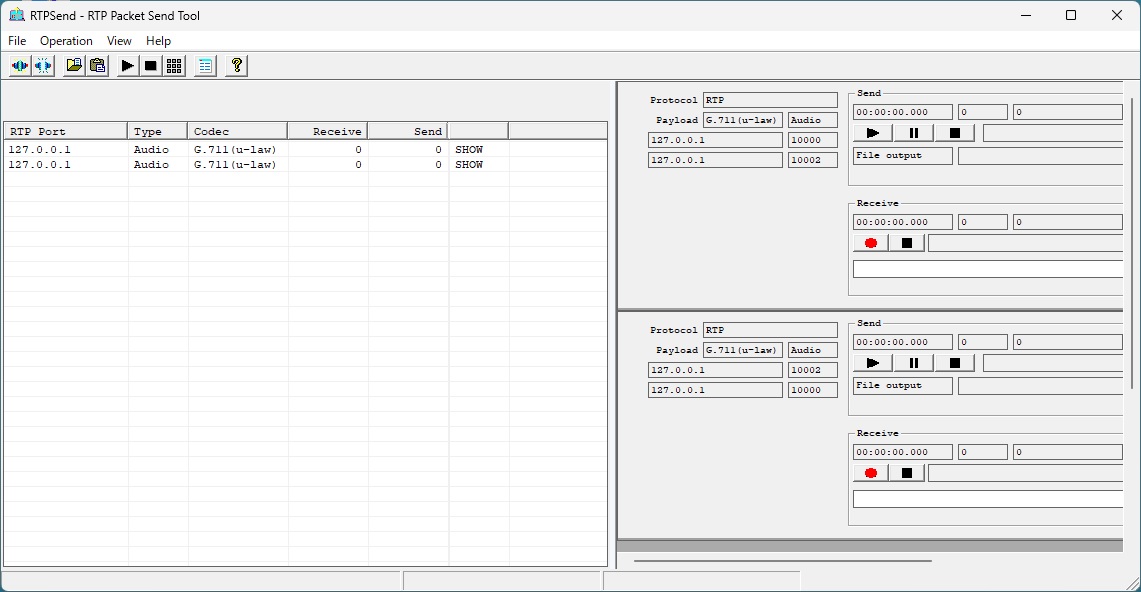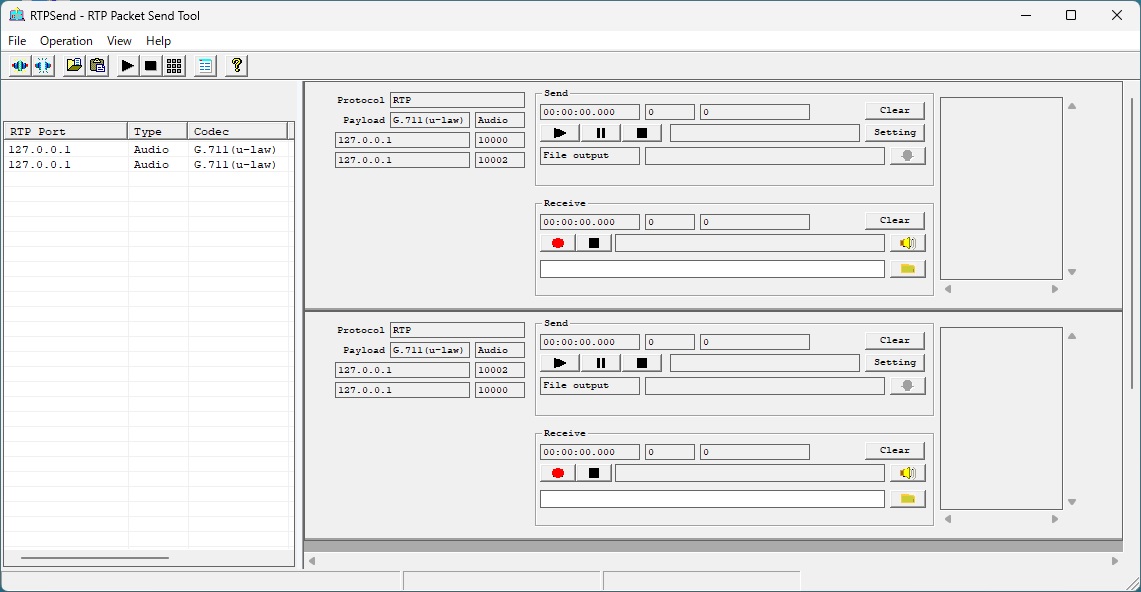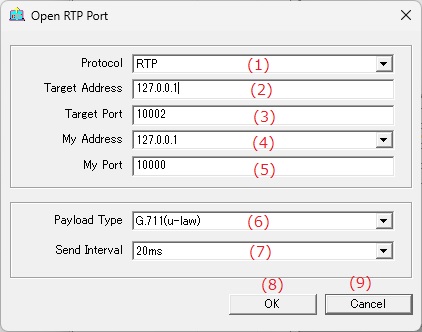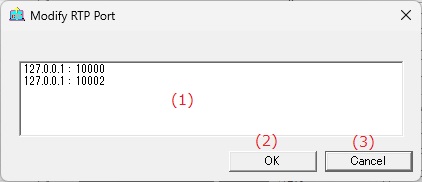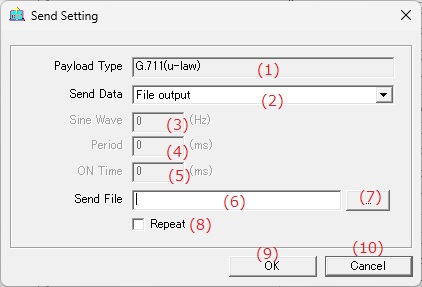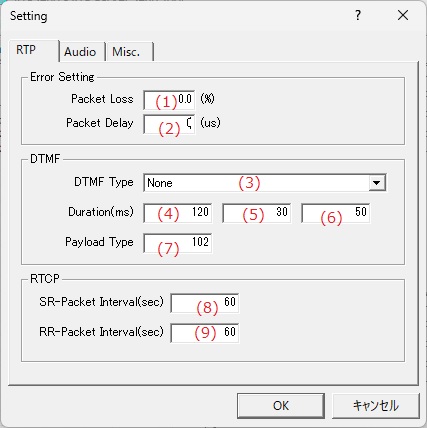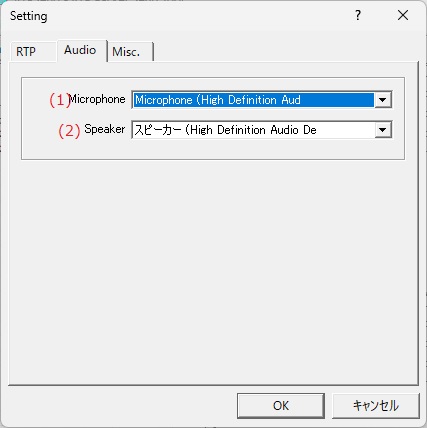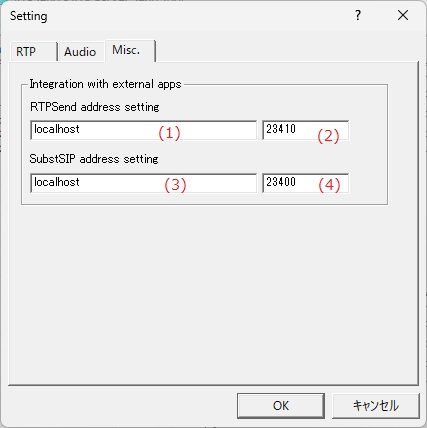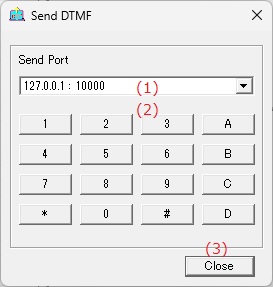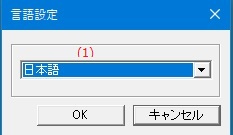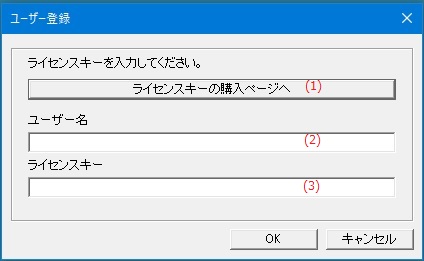Online help (RTPSend)
The archive file is compressed in zip format.
Please make a suitable folder, and place all files in the folder you created with the same folder structure.
File organization
| rtpsend.exe | "RTPSend" Application file. |
|---|
Please delete each folder where the application exists.
File
| New RTP Port | Add an RTP port to the RTP port list. |
|---|---|
| Close RTP Port | Closes the RTP port. |
| Load RTP List |
Loads the RTP port list saved in a file. |
| Save RTP List | Saves the current RTP port list to a file. |
| Modify RTP Port | Change the RTP port setting. |
| Setting | Make application settings for the application. |
| Exit | Exit the application. |
Operation
| Start RTP | All RTP port will start sending and receiving RTP simultaneously. |
|---|---|
| Stop RTP | Stops RTP transmission and reception on all RTP port simultaneously. |
| Send DTMF | Use the Send DTMF dialog to send DTMF signals from the RTP port. |
View
| Two Rows | Displays the RTP port panels in a window in two horizontal rows. |
|---|---|
| Tool Bar | Sets whether to show or hide the toolbar. |
| Status Bar | Sets whether to show or hide the status bar. |
Help
| Help Topics | Open the online help page. |
|---|---|
| Choose Language |
Select the display language of the application as "English" or "Japanese". |
| About RTPSend |
Displays application version information. |
| To Keep Using ... |
Enter the license key. |
Displays a list of open RTP ports.
| (1) | RTP Port | Displays the IP address of the RTP port. |
| (2) | Type |
For audio RTP ports - "Audio". For video RTP ports - "Video". |
| (3) | Codec | Displays the data type of the payload. |
| (4) | Receive | Displays the number of bytes received. |
| (5) | Send | Displays the number of bytes sent. |
| (6) | State of RTP Port Panel |
If the RTP Port panel is visible - "SHOW". If the RTP Port panel is not displayed - "HIDE" Double-clicking on the corresponding line in the RTP port list will toggle between "SHOW" and "HIDE". |
This is the RTP port panel that sends and receives RTP data.
| (1) | Protocol | Displays the communication protocol. |
| (2) | Payload | Displays the data type of the payload. |
| (3) | Address To | Displays the IP address and port number of the connection destination. |
| (4) | Address From | Displays the IP address and port number of my station. |
| (5) | Time stamp | Displays the timestamp of the RTP packet sent. |
| (6) | Number of error packets | Displays the number of error packets sent. |
| (7) | Number of bytes sent | Displays the number of bytes in the packets sent. |
| (8) | Clear | Clears the display of timestamps for sent packets, the number of error packets, and the number of sent bytes. |
| (9) | Start sending | Start RTP transmission. |
| (10) | Pauses sending | Pause RTP transmission. |
| (11) | Stop sending | Stop RTP transmission. |
| (12) | ||
| (13) | Setting | Use the Send Settings dialog to set the data to be sent. |
| (14) | Transmitted Data | Displays the source of the transmission data. |
| (15) | Transmission data details | Displays the contents of the transmitted data. |
| (16) | Microphone | Enables microphone input if the sending data is microphone input. |
| (17) | Time stamp | Displays the timestamp of the received RTP packet. |
| (18) | Number of error packets | Displays the number of received error packets. |
| (19) | Bytes received | Displays the number of bytes in the received packets. |
| (20) | Clear | Clears the display of received packet timestamps, number of error packets, and number of received bytes. |
| (21) | Start receiving | RTP reception will start. |
| (22) | Stop receiving | Stops RTP reception. |
| (23) | ||
| (24) | Speaker | If the received RTP data is audio data, the audio data is output to the speaker. |
| (25) | Received files | Specifies the file name to save the received payload to. |
| (26) | Receive file selection | Select the receiving file name from the file selection dialog. |
Adds an RTP port panel to the window.
| (1) | Protocol |
Specify the communication protocol from the following:
|
|||
| (2) | Terget Address | Enter the terget IP address. | |||
| (3) | Terget Port | Enter the terget port number. | |||
| (4) | My Address | Enter my IP address. | |||
| (5) | My Port | Enter my port number. | |||
| (6) | Payload Type |
Specify the payload data type from the following:
|
|||
| (7) | Send Interval | Enter the interval between RTP packets. | |||
| (8) | OK | Adds an RTP port panel to the window. | |||
| (9) | Cansel | Cancels opening the RTP port and closes the dialog box. |
Closes the RTP Port panel displayed in the window.
| (1) | List of RTP Port Panel | Displays a list of destination IP addresses and port numbers in the RTP port panel. |
| (2) | All Select | Selects all RTP ports displayed in the RTP Port panel list. |
| (3) | OK | Closes the selected RTP port panel and closes the dialog. |
| (4) | Cancel | Cancels the selection of the RTP port panel to close and closes the dialog. |
Change the RTP port setting in the RTP port panel displayed in the window.
| (1) | List of RTP Port Panel | Displays a list of destination IP addresses and port numbers in the RTP port panel. |
| (2) | OK | Change the settings of the selected RTP Port panel using the RTP Port Open dialog. |
| (3) | Cancel | Cancels the RTP port setting and closes the dialog box. |
| (1) | Payload Type | Displays the payload type of the RTP packets to be sent. | ||||||||
| (2) | Send Data |
Select the destination for sending data from the following:
|
||||||||
| (3) | Sine Wave |
Specifies the frequency of the sine wave to be generated when the transmission data type is sine wave output. This is only valid when the transmission data type is "Sine Wave". |
||||||||
| (4) | Period |
Specifies the time for one cycle when the transmission data type is sine wave output. One cycle is "ON Time" + "OFF Time". This is only valid when the transmission data type is "Sine Wave". |
||||||||
| (5) | ON Time |
Specifies the time during the output cycle when the send data type is sine wave output and the sine wave output is valid. This is only valid when the transmission data type is "Sine Wave". |
||||||||
| (6) | Send File |
Enter the file name to send if the data type is file transmission. If the payload is audio data, specify an encoded audio data file or a Linear-PCM WAV file. For WAV files, packets are sent while the file contents are encoded in real time. If the payload is video data, specify the encoded video data file. The following file formats can be loaded:
|
||||||||
| (7) | file selection |
In the Select File to Send dialog, select from existing files. This is only valid when the transmission data type is "File transmission". |
||||||||
| (8) | Repeat |
If you check Repeated Sending, the same file will be sent repeatedly. This is only valid when the transmission data type is "File transmission". |
||||||||
| (9) | OK | The transmission data settings will be enabled and the dialog will close. | ||||||||
| (10) | Cancel | Cancels the sending settings and closes the dialog box. |
Configure various settings.
RTP
Error Setting
| (1) | Packet Loss Rate | This setting prevents packets from being sent randomly at the specified packet loss rate during RTP packet transmission. |
| (2) | Packet Delay | Packets are sent by adding the specified packet delay time to the RTP packet sending interval. |
DTMF
| (3) | DTMF Type |
Select the data format of the DTMF signal.
|
||||||
| (4) | Duration - the duration of the entire DTMF pulse | Sets the overall DTMF pulse duration. |
||||||
| (5) | Duration - OFF period at the start of the DTMF pulse | Sets the time for the OFF period at the start of the DTMF pulse. |
||||||
| (6) | Duration - ON period of DTMF pulse | Sets the ON period of the DTMF pulse. |
||||||
| (7) | Payload Type | Specifies the payload type of the DTMF packet when "RFC2833" is selected as the DTMF method. |
RTCP
| (8) | SR-Packet Interval | Sets the transmission interval for RTCP SR packets. |
| (9) | RR-Packet Interval | Sets the transmission interval for RTCP SR packets. |
Audio
Set up audio device.
| (1) | Microphone | Select the device you want to use for your microphone. |
| (2) | Speaker | Select the device you want to use for your speakers. |
Misc.
Configure various other settings.
Integration with external apps
| (1) | RTPSend Address | Enter the IP address of this application to communicate with the application "SubstSIP". |
| (2) | RTPSend Port number | Enter the port number of this application to communicate with the application "SubstSIP". |
| (3) | SubstSIP Address | Enter the IP address of the SIP server "SubstSIP". |
| (4) | SubstSIP Port number | Enter the port number of the SIP server "SubstSIP". |
Sends DTMF signals.
| (1) | Send Port | Select the RTP port that sends the DTMF signal. |
| (2) | Dial Pad | When you press each dial, the corresponding DTMF signal is sent from the RTP port. |
| (3) | [Close]button | Close the dialog box. |
Set the display language of the application.
| (1) | Choose Language |
Select the display language of the application from the following languages.
|

